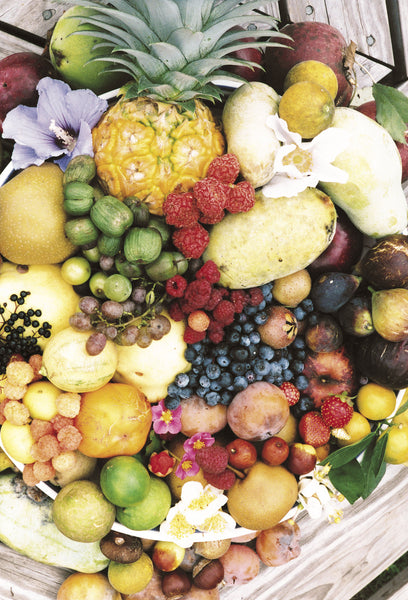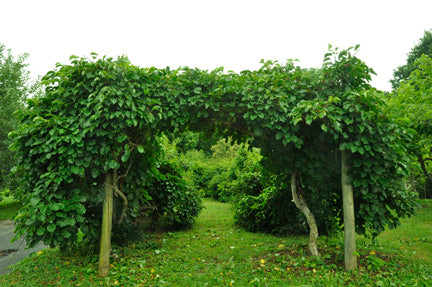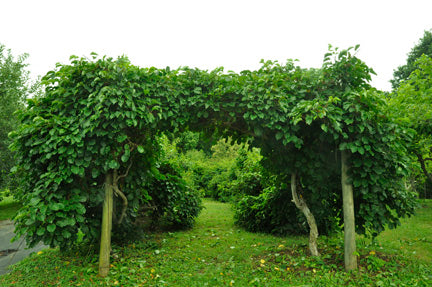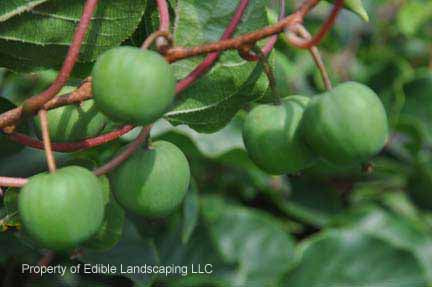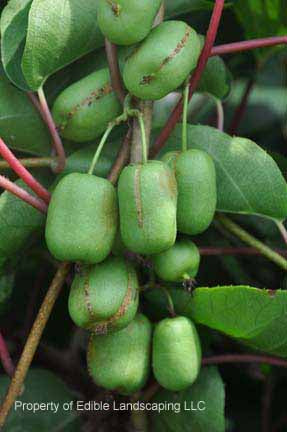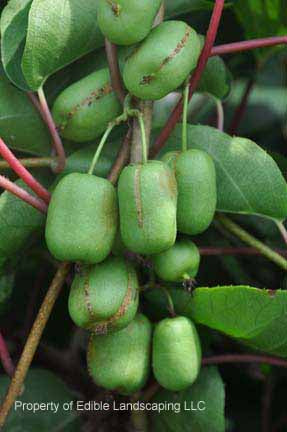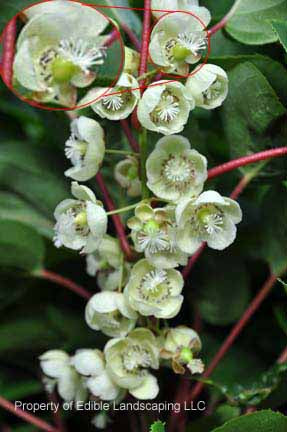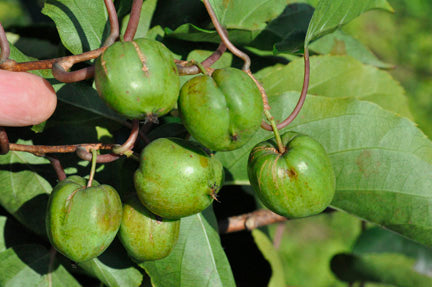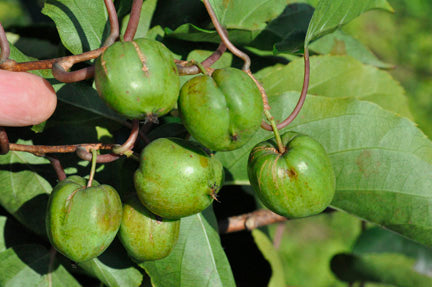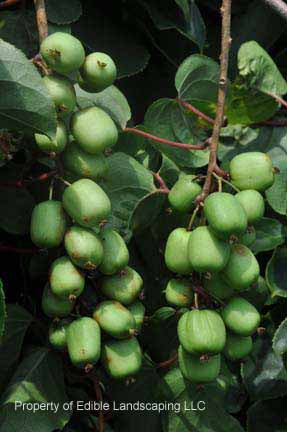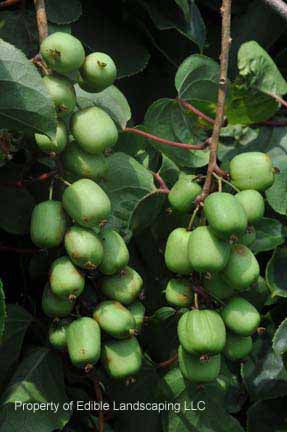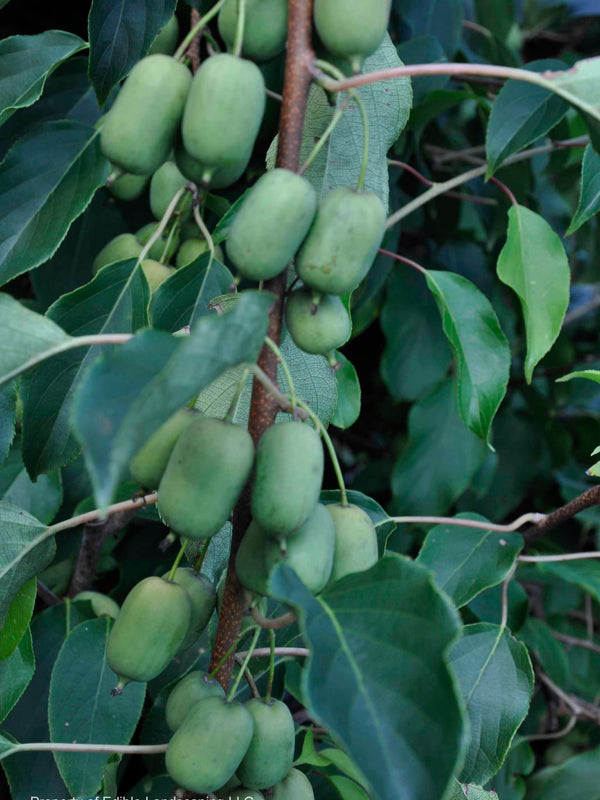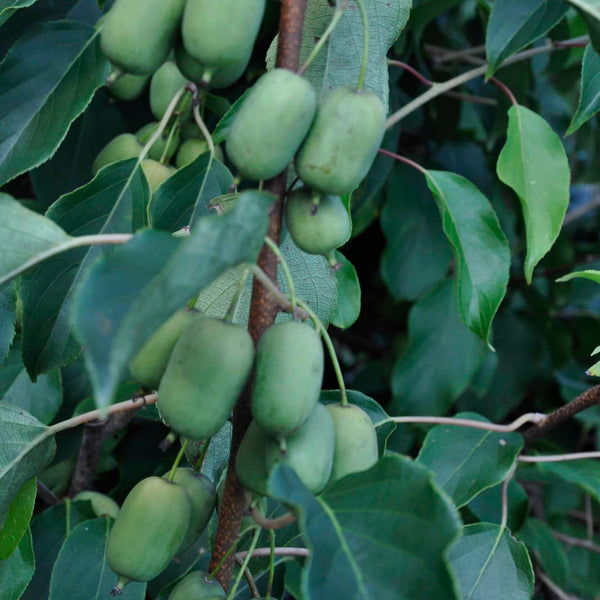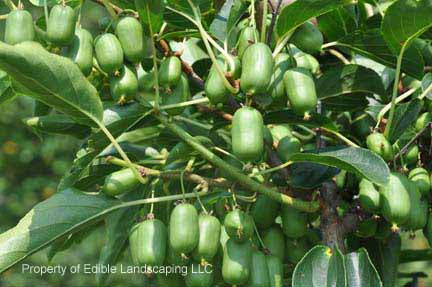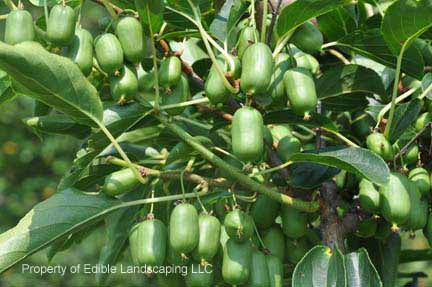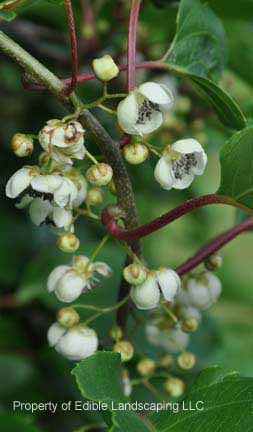Products
Showing
1 - 11
of
11
result
Show:
Click here for Kiwi Care Guide Actinidia argutaSelection from Chico, California (1974) This variety blooms a few days earlier than the 74-46. It is compatible with all of our Actinidia...
Click here for Kiwi Care Guide Actinidia arguta (Cordifolia Female) Fruit Characteristics: High sweetness, non-bitter skin, and round-shouldered fruit. Variety: Low-chill, highly productive, and one of the best-flavored varieties. Planting:...
Click here for Kiwi Care Guide Actinidia arguta (Dumbarton Oaks)This early-maturing, hardy kiwi ripens three weeks earlier than Anna. One of our favorites! The original vine grows in Georgetown, Washington,...
Fairchild Hardy Male Kiwi aka 74-52
Click here for Kiwi Care Guide Actinidia arguta (Fairchild aka 74-52 Male)A male kiwi variety that pollinates all of our Actinidia arguta varieties. Hardiness Zone: 5-8Space Requirement: 15' on a...
Click here for Kiwi Care Guide Actinidia arguta ‘Fifty-Five’The earliest arguta kiwi to ripen in our collection, about 2–3 weeks earlier than ‘Ken’s Red’ or ‘Dumbarton Oaks.’ Recommended Spacing: 15'...
Click for Kiwi Care Guide Actinidia arguta (Fortyniner)Also known as 74-49 Fruit Characteristics: Large-shouldered fruit. Ripens around the same time as Geneva and Arbor-eat-um. Vine Characteristics: A very attractive vine...
Click her for Kiwi Care Guide Actinidia arguta (Geneva 3) The Geneva 3 kiwi is part of the Dr. Slate collection, originally discovered near Hedrick Hall at the Cornell Experiment...
Click here for Kiwi Care Guide Actinidia arguta (Geneva) The Geneva kiwi is part of the Dr. Slate collection, originally discovered near Hedrick Hall at the Cornell Experiment Station in...
Actinidia arguta Pollinates any of the other hardy kiwis. One male plant can pollinate up to six females. Space 10' - 15' apart from female kiwis on 6' high trellis....
Actinidia arguta Issai has long fruits about 1.5". Issai will produce one year after planting. Sets fruits without a male, but sets more with one. Not as vigorous as most...
Actinidia arguta Dr. Meader, plant breeder from NH, had this male growing at his farm in Rochester, NH. Probably from Korea, this adaptable male should be spaced 15 feet on...
FROM_JS
jsprice
jsprice
FROM_JS
FROM_JS
Add to cart
Added
Limit Products
Wait..
Translation missing: en.general.search.loading
x

